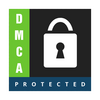
Getting a job seems like an exciting task. Yet the initial process of documentation and registering consists of loads of paperwork. The human resources department of organizations is responsible for handling such paperwork. Such paperwork consists of the organization’s rules and regulatory agreements, directory collection of documents for record-keeping, prior experience recording, and identification access proceedings.
To stay compliant with federal law and regulations, employers have to file taxation forms. Such compliance does reflect the obedience of organizations towards the federal system of working. Also, these taxation forms passively help organizations in the data collection process.
What is Form I-9
Form I-9 is an IRS-suggested taxation form filed by employers of organizations located within the territorial boundary of the federal state. It is also known as Employment Eligibility Verification. Employers and employees are the primary stakeholders of form i-9. In addition, the Immigration Reform and Control Act of 1986 mandated the filing of form i-9. This form provides valid legal authorization and identity verification to all employees who’ve worked in the United States.
Every employer hiring employees is mandated to file form i-9 for each employee. I-9 compliance is a compulsion regulation suggested by federal law authorities. The set of documents required for the verification should be facially identifiable, like documents that would physically match the existing appearance of an employee.
Purpose of the Form I-9
The purpose of forms 1-9 is to document each new employee (citizen and noncitizen) hired after 6 November 1986. The basic purpose is to have aggregated data of eligible citizens working at prominent or remote organizations located in the federal territory. The organization’s employers and human resources department is the formulating body expected to execute the precise and careful filing of form i-9.
Why it’s important to fill the Form I-9?
First of all, the I-9 form is a mandatory federal law authorized by the IRC Act of 1986. Hence, all prevailing organizations must comply with form i-9. Not staying compliant to form i-9 could point to a question of compliance and obedience of organizations towards federal functioning. Consequences could be affecting the functioning and image of the organization.
Second, certain compliance would allow employers to have extensive data on eligible employees. For example, later record-keeping and future purposes to be more precise.
Lastly, it is important to file form i-9 for each employee an employer is hiring. If an employer fails to file so, the employee’s status will be declared unauthorized. Such unauthorized status could also diminish the profile value of an employee and the organization.
List of acceptable documents
Form I-9 filing revolves around several documentation and formalities. Form I-9 suggests three lists of required documents required to be submitted by employees under the guidance of employers to file Form I-9, known as List A, List B, and List C. In case of a lack of documents from list A, an employer should present a set of two documents from lists b and c.
List A consists of documents verifying both identity and eligibility for legal work.
- US citizen passport is the primarily suggested document that would verify an employee’s identity and eligibility for legal work.
- A green card (Form I-551) confirms the citizen-based counting of an employee or temporarily I-551 printed notation.
- Employment Authorization Document (Form I-766) with a photograph would confirm the employment civil of an employee.
- For non-immigrant employees, form I-94 must be filed, mentioning the updated status of an employee as mentioned in their respective passports.
- The state also accepts passports from the Federated States of Micronesia or the Republic of the Marshall Islands with Form I-94 or Form I-94A.
List B consists of documents that only verify the identity of the legal work. Suppose an employee is unable to provide any document from List A. In that case, they’ve to provide employers with two documents from List B and C.
- The state would efficiently accept Id cards issued by outlying possession or state, federal, or local governments. These id cards comprise information like name, gender, height, eye color, date of birth, and address.
- The state would also accept driver’s licenses and voter registration cards.
- The state accepts school id cards with a photograph and Native American Tribal documents
- The state also considers US military cards, merchant mariner cards, and military dependent’s id cards are the documents.
List C consists of the documents that would act as a complimentary list to list b.
- First, US Social Security Card would only be valid for INS and DHS authorization work.
- Second, the state would consider original or certified birth certificates with a federal officiated seal.
- Third, the state can consider Citizen Id Card (Form I-197). Certification of Birth Abroad (Form FS-545) or Report (Form DS- 1350) issued by the government of the United States.
- The state would also consider the Consular Report of Birth Abroad issued by the Department of State (Form FS-240) for verification.
- And lastly, relevant employment authorization documents issued by DHS will also be considered.
Form I-9 & E-Verify
E-verify is a web-based employment eligibility verification function. E-verification collects information from form I-9 and executes the process of verification. In addition, e-verification electronically compares the information of form I-9. The choice of filing e-verify is voluntary while filing form I-9 is mandatory.
E-verify requires social security number as a primary piece of information. Third, E-verify mandates the presence of photographs on documents mentioned in List B. And lastly, e-verify wouldn’t be used to reverify the status of expired employment authorization. Employers with federal contractors under the FER (Federal Acquisition Regulation) mandate to enroll to e-verify as a part of suggestive terms.
New Extension, Requirements, and Other Changes for 2022
Considering the severity of the pandemic situation, DHS has extended the flexibility of Form I-9 till 31 October 2021. The temporary set of guidance has already expired on 30 April 2022.
Changes and additions to the form i-9 are minor yet impactful. Sections 1 and 2 are compressed into one section, highlighting the paper-reduction concern. For rehire, and verification purposes will target section 3. From 15 pages to 7 was decreased, emphasizing the set of instructions.



